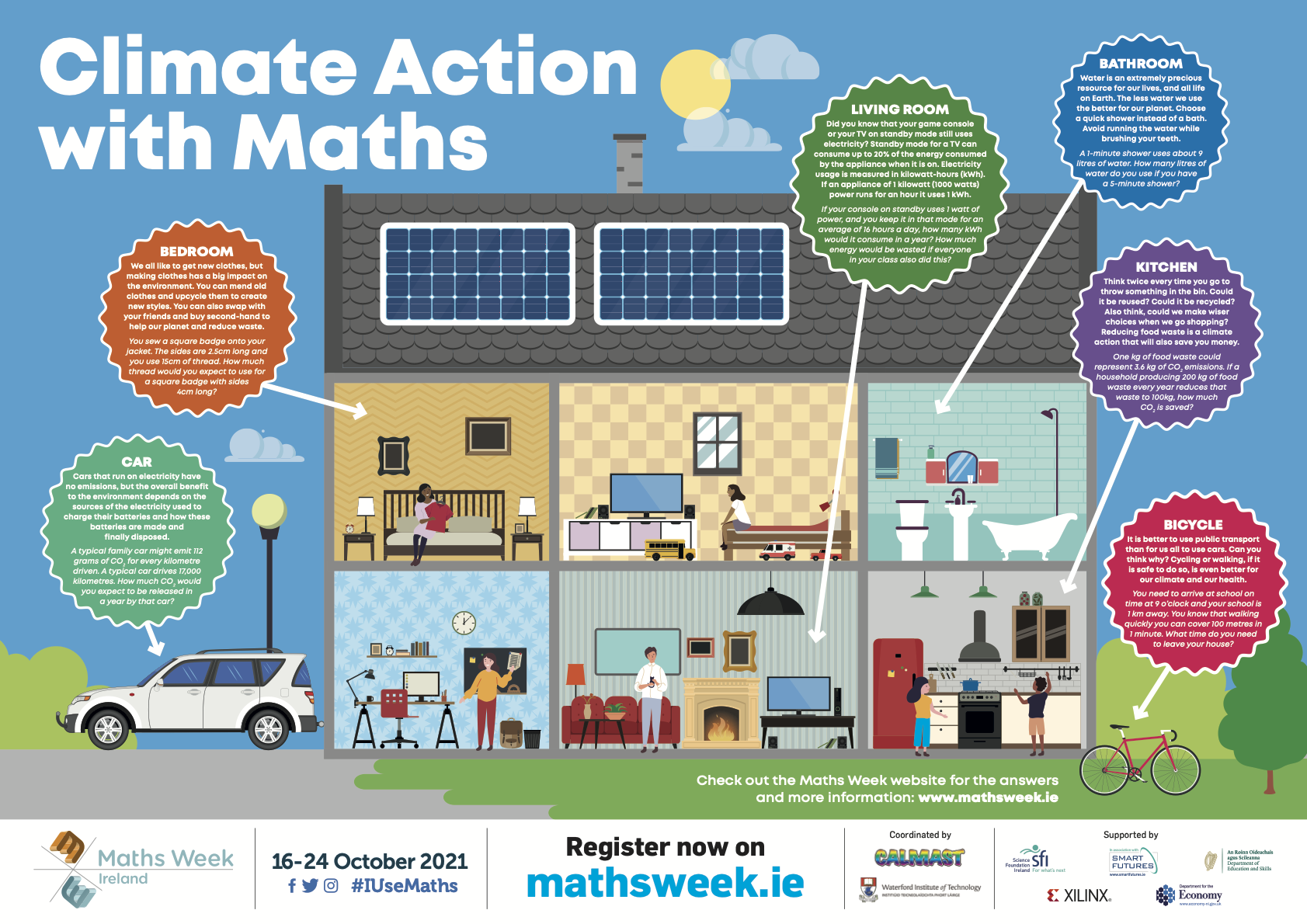Climate Action with Maths
Climate Action with Maths- Poster activity
Introduction
Our homes use energy and resources in lots of different ways. When looking to undertake positive Climate Actions you can make many small changes at home which can have a big impact in the future.
BATHROOM:
Water is an extremely precious resource for our lives, and all life on Earth. The less water we use the better for our planet. Choose a quick shower instead of a bath. Avoid running the water while brushing your teeth.
A 1-minute shower uses about 9 litres of water. How many litres of water do you use if you have a 5-minute shower?
BEDROOM:
We all like to get new clothes, but making clothes has a big impact on the environment. You can mend old clothes and upcycle them to create new styles. You can also swap with your friends and buy second-hand to help our planet and reduce waste.
You sew a square badge onto your jacket. The sides are 2.5cm long and you use 15cm of thread. How much thread would you expect to use for a square badge with sides 4cm long?
KITCHEN:
Think twice every time you go to throw something in the bin. Could it be reused? Could it be recycled? Also think, could we make wiser choices when we go shopping? Reducing food waste is a climate action that will also save you money.
One kg of food waste could represent 3.6 kg of CO2 Emissions. If a household producing 200 kg of food waste every year reduces that waste to 100kg, how much CO2 is saved?

Click the image for a pdf
LIVING ROOM:
Did you know that your game console or your TV in standby mode still uses electricity? The standby mode for a TV can consume up to 20% of the energy consumed by the appliance when it is on.
Electricity usage is measured in kilowatt-hours (kWh). If an appliance of 1 kilowatt (1000 watts) power runs for an hour it uses 1 kWh.
If your console on standby uses 1 watt of power, and you keep it in that mode for an average of 16 hours a day, how many kWh would it consume in a year? How much energy would be wasted if everyone in your class also did this?
BICYCLE:
It is better to use public transport than for us all to use cars. Can you think why? Cycling or walking, if it is safe to do so, is even better for our climate and our health.
You need to arrive at school on time at 9 o’clock and your school is 1 km away. You know that walking quickly you can cover 100 meters in 1 minute. When do you need to leave your house?
CAR:
Cars that run on electricity have no emissions, but the overall benefit to the environment depends on the sources of the electricity used to charge their batteries and how these batteries are made and finally disposed.
A typical family car might emit 112 grams of CO2 for every kilometre driven. A typical car drives 17,000 kilometres. How much CO2 would you expect to be released in a year by that car?
Answers
BEDROOM [24 cm]
BATHROOM [45 l]
KITCHEN [360 kg]
LIVING ROOM [5.84 kWh]
BICYCLE [8:50]
CAR [1904 kg]
